As the semester comes to an end, four Parsons graduating fashion designers discuss their experiences and thesis collection.
The spring semester is coming to an end with an in-person graduation ceremony on May 20. Many of those graduates went to Parsons School of Design. I wanted to hear from them, in order to gain a perspective of what they went through with COVID-19, doing design remotely and preparing their final thesis collection. In this roundtable discussion conducted over Zoom and in-person, graduating Parsons fashion design students Kasey Riera, Sophia Ayers, Weijing Xiao and Yinglun Zhang discuss their personal experiences within the college and share the inspiration of their respective theses. Pieces of their thesis collection will be displayed on May 18, from 5 p.m. to 8 p.m at the Parsons Festival.
This hour-long conversation has been edited for clarity and flow.
Gillani Peets: To begin, can everyone discuss their first moment with fashion? And the realization of what made you choose the profession of being a designer?
Kasey Riera [22, from Florida]: I was about 10 years old. I was in a summer after school program that taught young people how to sew. We had different themes and we would make clothes and they would have a fashion show in a hotel. And I remember making something and I got a pretty impressive reaction from people around me. I was like, ‘People like this and the ideas of my head work,’ and then I said, ‘Hey mom, I think I figured out what I want to do for the rest of my life.’ That’s my aha moment.
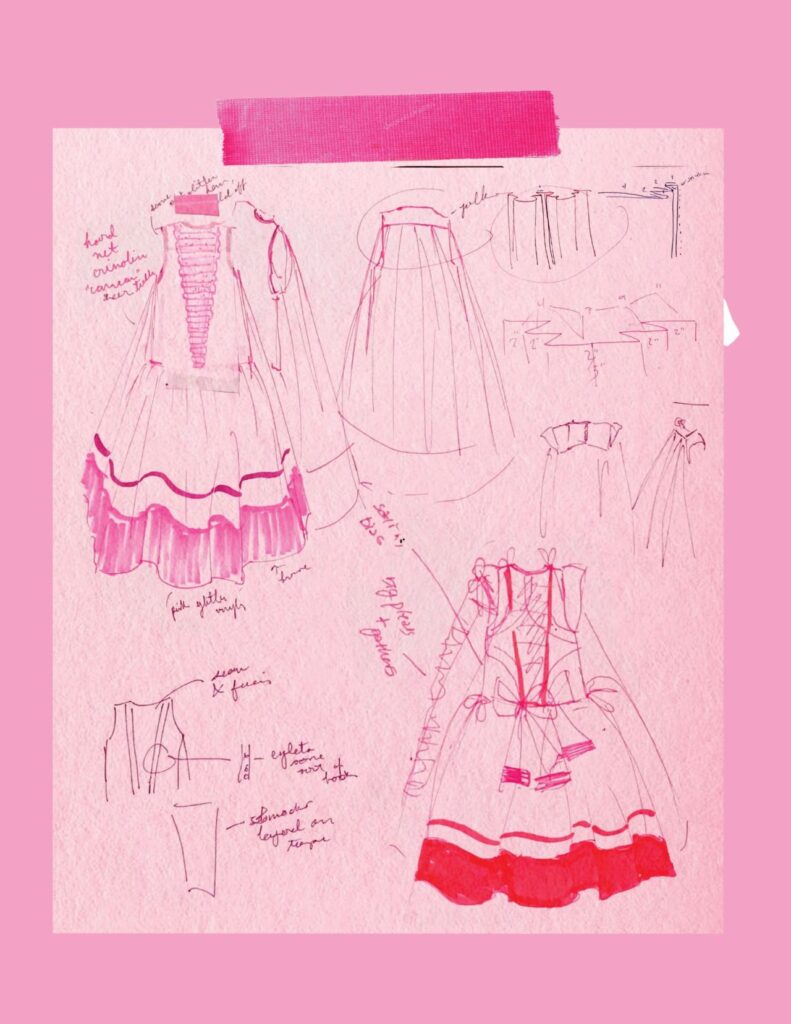
Yinglun Zhang [23, from England, originally from China]: For me, I think it was between the end of kindergarten or the end of elementary school. I started to design for my mom, and I also loved to dress myself. Other kids’ parents would dress up for them, buy clothes for them, I picked my own and somehow designed my own. I started doing some other designs for my mom, for styling, for hair, for garments, and I saw the satisfaction on her face. And that’s the first moment seeing the satisfaction of others.
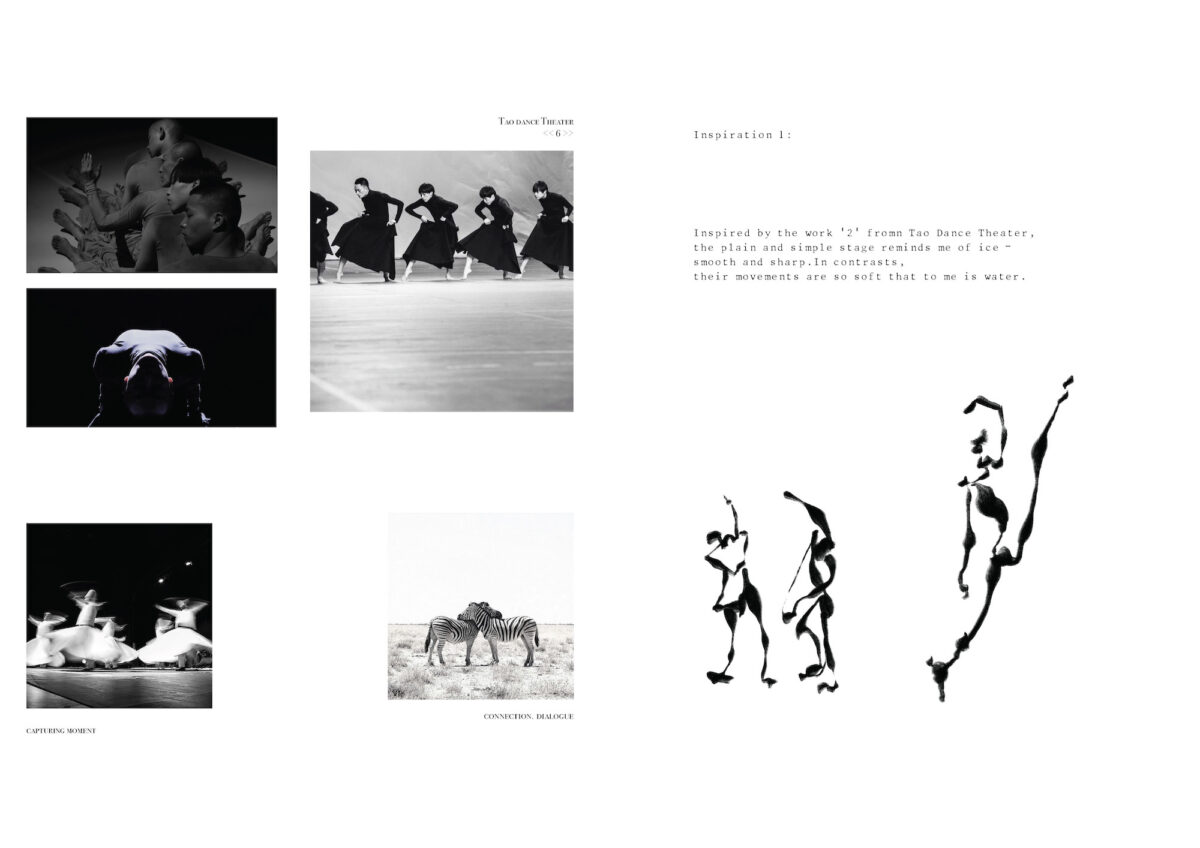
Sophia Ayers [22, from Michigan]: For me, it was probably in kindergarten because my mom would sew on her home machine, and I remember she told me: ‘You can design your first day kindergarten dress and I’ll make it.’I made this simple dress with a zigzag and I didn’t seriously consider designing until high school when we had our first school fashion show and I got pretty involved in that. Then I started making prom dresses and my own clothes, and from there I said ‘I should do this.’
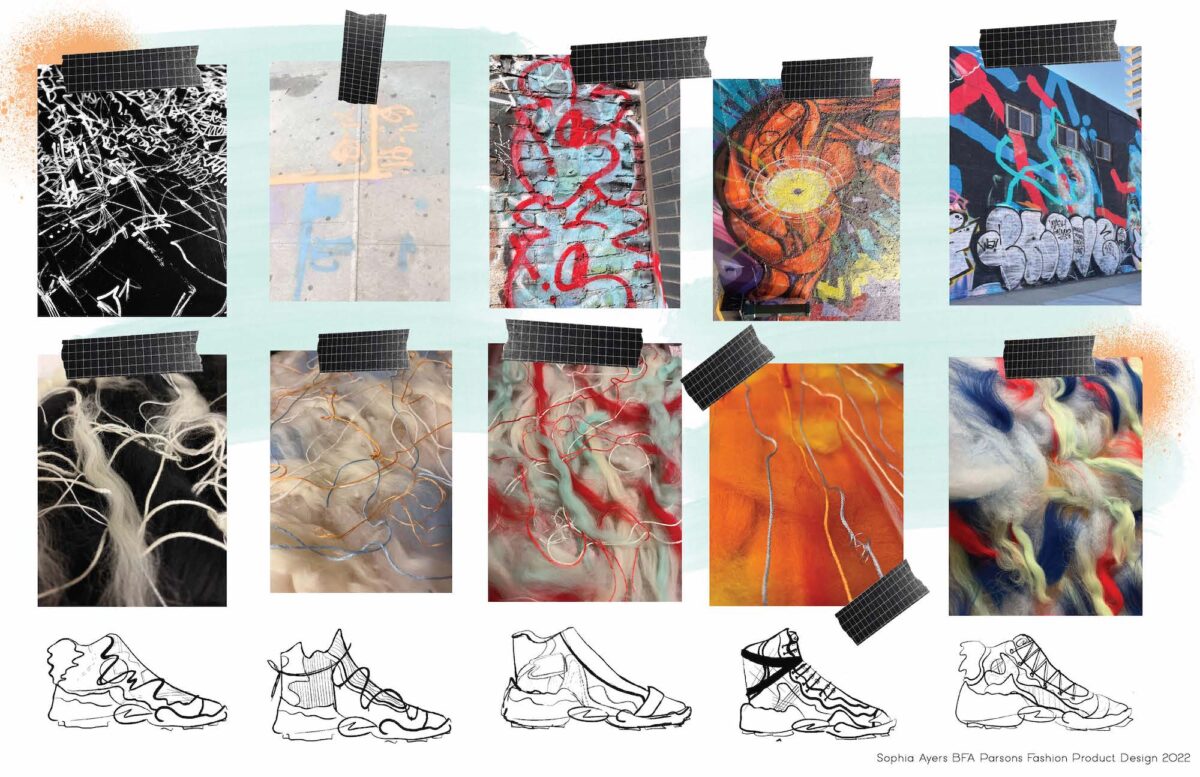
Weijing Xiao [22, from China]: For me, there’s never really a moment where I feel like I’m a designer, and in fact I think my designs are pretty anti-designs because I started out in modern theater, where clothing functions more as storytelling. Even until now, a professor would be like, ‘I don’t think you’re design, I think you’re fine art.’ I guess it’s really after this particular thesis that I felt like a designer. I always think of clothes and bodies as sculptures that move in a speculative way, which is very anti-reality. Yeah, I guess I’m anti-design designer. [laughs]
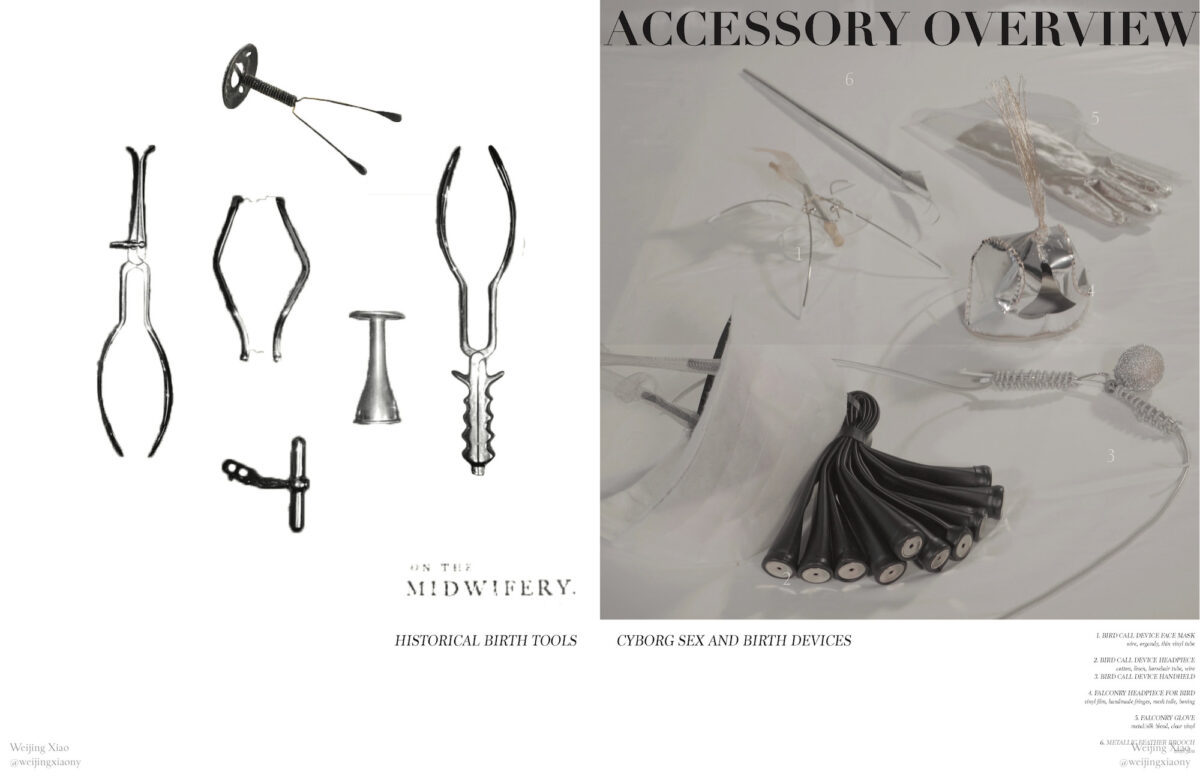
GP: Can you remember your first design at Parsons and the reactions it got?
KR: I don’t know if you guys [Ayers and Xiao] went through it, but our first project was the shirt project. Oh God, what a disaster. [Everyone laughs]. It’s basically just a button down shirt we all had to make, but we all did so in our own ways.
YZ: Same as her. And interestingly, some of the designs I developed into my thesis. It’s also our first presentation in the VS class [Visual Components Studio]. I really missed that class, the environment, I’m very lucky that was the first semester that I got to know fashion.
KR: Yeah, I think it was also because this was pre-pandemic, right before everything happened. It was all this wonderfulness and then it’s like ‘Oh, nevermind.’ [laughs]
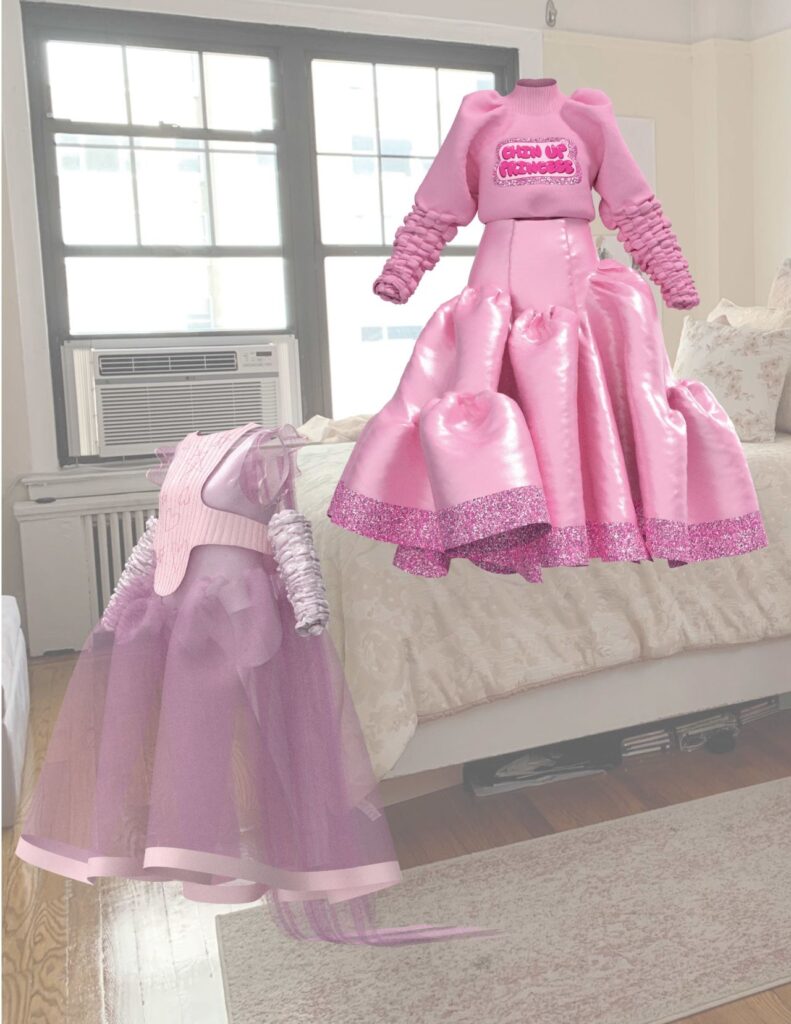
SA: I agree with all that. I remember the shirt project and at the time it was really stressful because it’s learning about the design world all at once. I remember being intimidated because so many people have different strengths, and I didn’t know how I had my own strength and it can grow. It was satisfying to say, ‘I sewed this.’
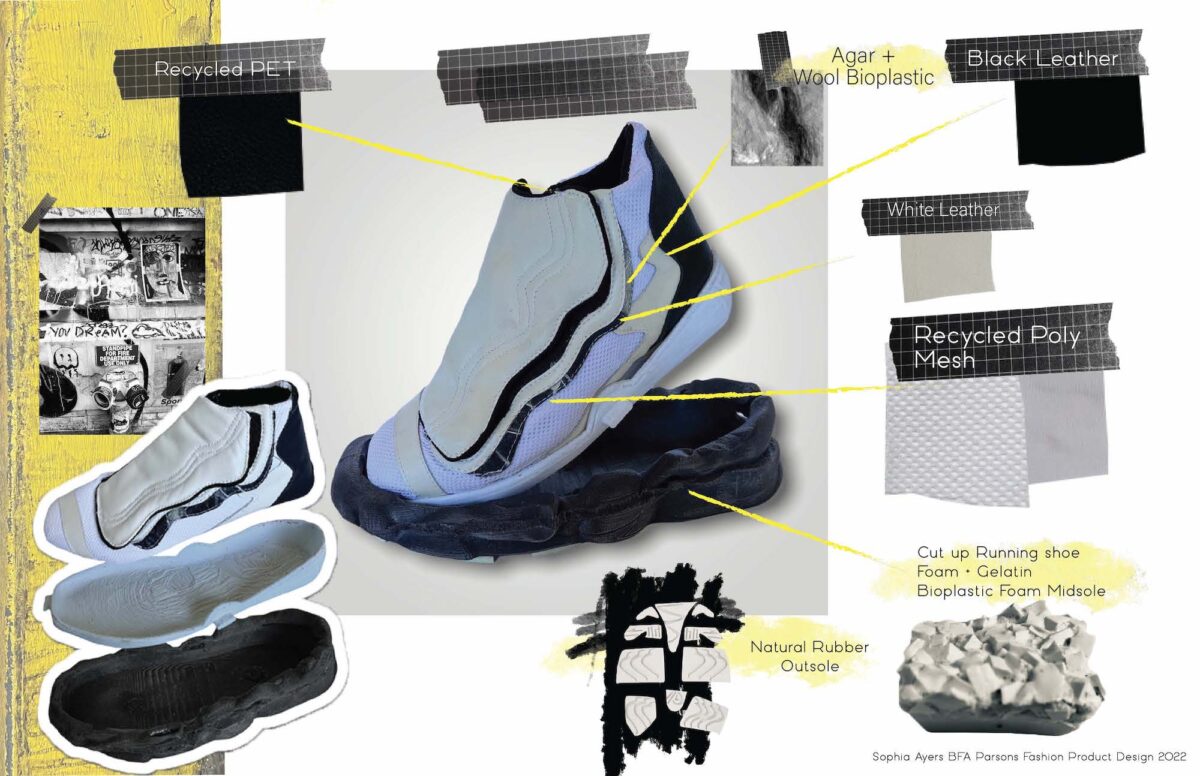
WX: My shirt project. I was really, really rejecting the idea of fashion and something being enjoyable, in that sense. I made this shirt that’s basically going to choke you when you wear it. I did a whole photoshoot of drowning mannequins in the water because I wanted to go to theater and my professor didn’t say anything about it. He was like ‘Performative, cool,’ but he gave me technical support. It took me three years, or even four, for me to convey this kind of conflict in a design manner. And then after that, I made pants that you can’t walk in. It’s very much about my conflict with the world and how I resolve it through those four years of learning how to express the idea.
GP: Can we talk about everyone’s thesis, because what I saw was a use of poetry and a different way of thinking about certain materials. So can everybody explain your thesis and the thought process that went into them?
KR: It’s called “The Pink Parade.” It’s what I describe as a six-part love letter to the color of pink, hyper femininity and reclaiming back the power of being a princess set as a visual timeline through the past, present and future of my ever growing, ever powerful girlishness. The idea came to mind that I always wanted to make a pink collection, just only with the color pink. I looked at pink from a global perspective, but more socially, even politically as well. What the color means and signifies in terms of gender, terms of roles of femininity, etc. And then, I looked at childhood photos, especially any instance I was wearing pink. Then I received very bad critique last semester where I was essentially told a very misogynistic commentary, rooted into the patriarchy that made me sad and very angry. The one that sticks to mind: ‘This lacks power, and you need to look at more masculine silhouettes in order to imbue that power.’
GP: This is what a professor told you?
KR: It was a panel. My professors were actually very struck by that commentary, so they were more on my side. Don’t remember or care to know this person’s name, because they made me so sad and angry, causing me to almost rethink my entire project. It wasn’t until [I saw] a Met [The Metropolitan Museum of Art] exhibition [Inspiring Walt Disney: The Animation of French Decorative Arts], that I sat there and said: ‘I’m going to make ballgowns to piss people off.’ They said it’s too princess-y, and I said ‘I’m going to make it as princessy as I possibly can.’ The best is I was encouraged by my professors, and the funny part is, most panels and critiquers still didn’t understand. But my professors do and my peers do. I wouldn’t change anything about it. It became this beautiful, glittery pink world that my seven year old self is so happy with that I was able to do.
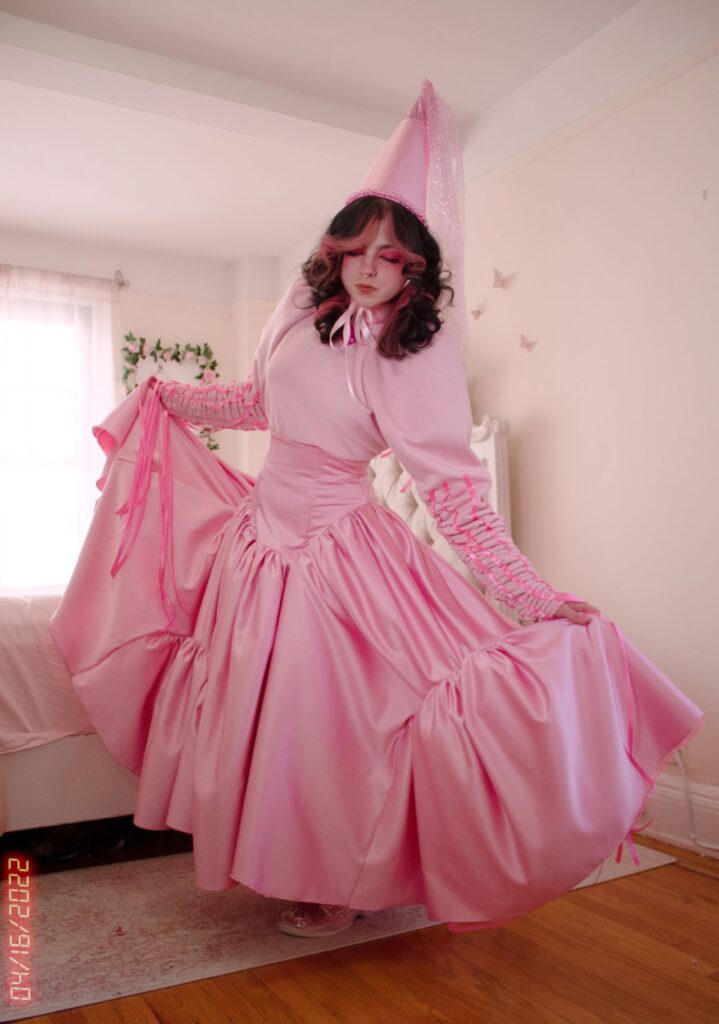
YZ: There’s three themes in my collection: ice or glaciers; sand; and water or waves. I started out thinking about my own design system, which is the essence of garments, the movement of garments, and the performance of garments, because I’m a designer, but I’m also a dancer. As our body moves, the garments flow with our bodies. Then that creates the movement, which is the movement of garments, and then as our body moves, and the garment moves, that creates the performance of the garments or as a collective. I also think, especially after the pandemic, we’ve all been isolated, and I really wanted to emphasize the idea of connection, involvement and the resonance that I may create with my audience and the performance themselves. At first, I started with the idea of stillness and movement. There’s many, many binary relationships. Not only like stillness and movement, but also like light and shadow, masculine and feminine. And in terms of stillness and movement, I love rocks. But when you look at rocks, it’s almost too sharp. Or when you look at water, it feels like it’s floating in the air, it’s like you’re never going to catch them. So when I look at the river flows around the rocks, I feel like that creates harmony and balance.
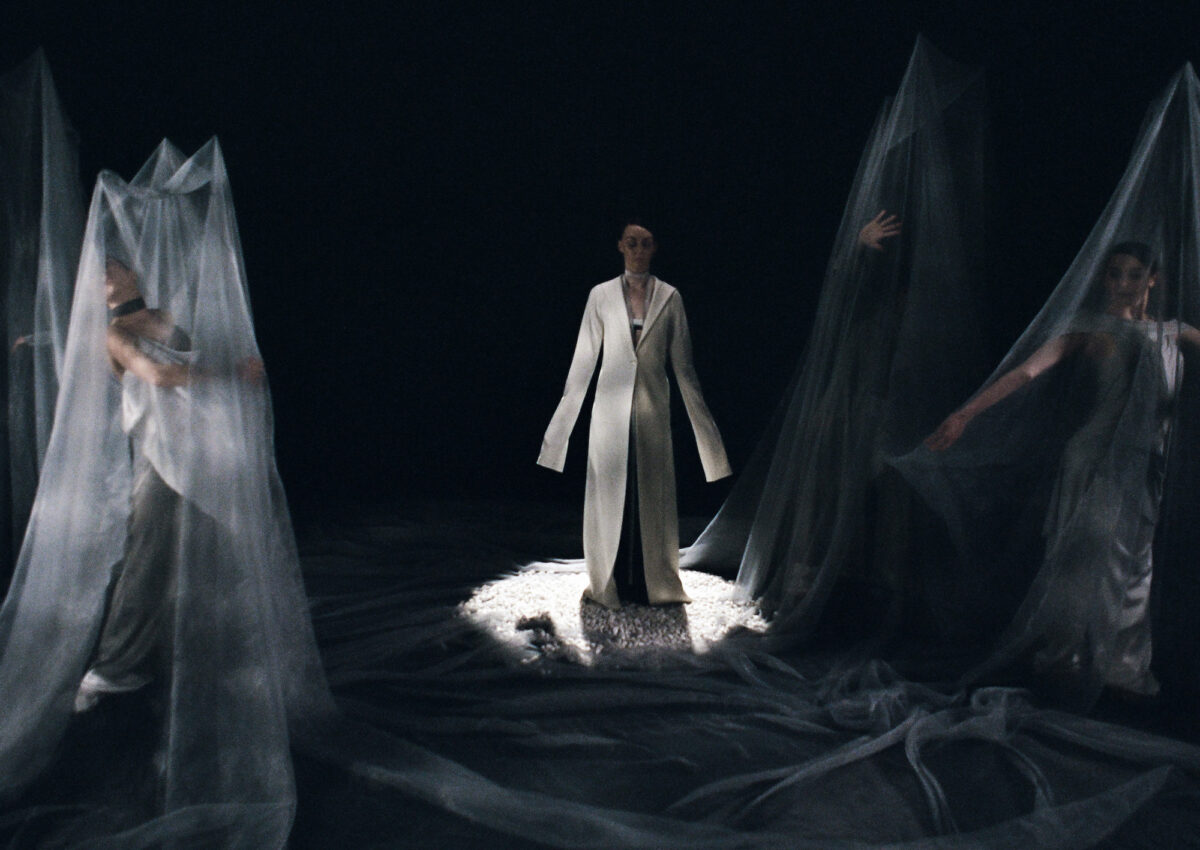
SA: I’m a runner, and I noticed this issue in the running community where I was just going through so many shoes every year, because basically you can only run in the pair of shoes for so long until they’ll get injured. I wanted to design a running shoe that could have a replaceable outsole. I use sustainable and recycled materials for the entire upper of the shoe. For the upper part of the shoe, I made a bio leather made out of wool and algae. That was more of a decorative component just because it’s not the most durable fabric for like actual athletic wear. When I made it sort of like an artistic representation of basically the artwork that I would see around New York City when I was actually going on my runs. For the outer part for the outsole I did try and make a version out of bio foam.
WX: My collection is “Mother.” Since I was very young, I always wanted to be a mother. But it’s become really ambivalent for me, both a reluctance and rejection towards femaleness and motherhood. In this particular collection, the birds, they have the capacity to carry a child within their body, but instead nature decided that they would lay an egg and hatch it from outside. Then I was starting to think about what if in a cyborg utopia we can reconfigure our bodily anatomy with that proposed different kind of interaction in the future, and social theories. And then there was this book I was reading by Donna Haraway called “A Cyborg Manifesto,” about how through technology and through transformation, this can be taken as an approach for the female to redefine or find a solution to the current climate.
I took a class last semester and my design ended up being acquired by the Cristóbal Balenciaga Museum [Museo Cristobal Balenciaga, in Spain]. It was just really an encouragement for me to carry on this kind of classic dressmaking, but at the same time, putting in an opinion, the view from a younger generation. I see clothing as anatomy. So there’s a lot of hand stitching, a lot of piping, and how the cloth is just as perfect looking from inside, as if you’re dissecting an animal, and that when it goes into the garments. That sort of conveyed this cyborg utopia idea that I have toward my ambivalent feeling of femaleness and motherhood.
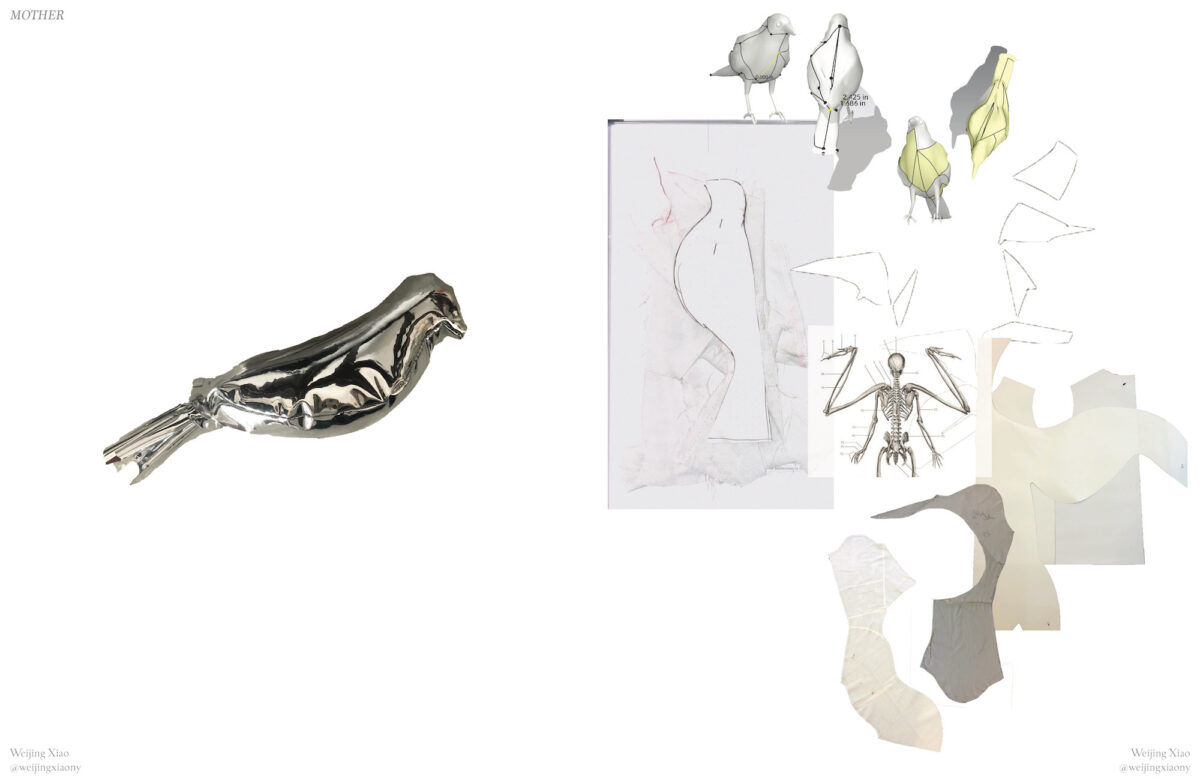
GP: I think a thread in the conversation is how some of you view fashion design. With your four years at Parsons, and coming from Weijing’s anti-fashion stance, how do you respond to people’s vision of fashion?
WX: I think people need to see fashion as just the same as technology, as medical field, as mathematics, anything, because that is not something that we just truly invent. It’s a result of a series of social changes. When looking at a garment it’s information that you can use to analyze what’s going on in the world.
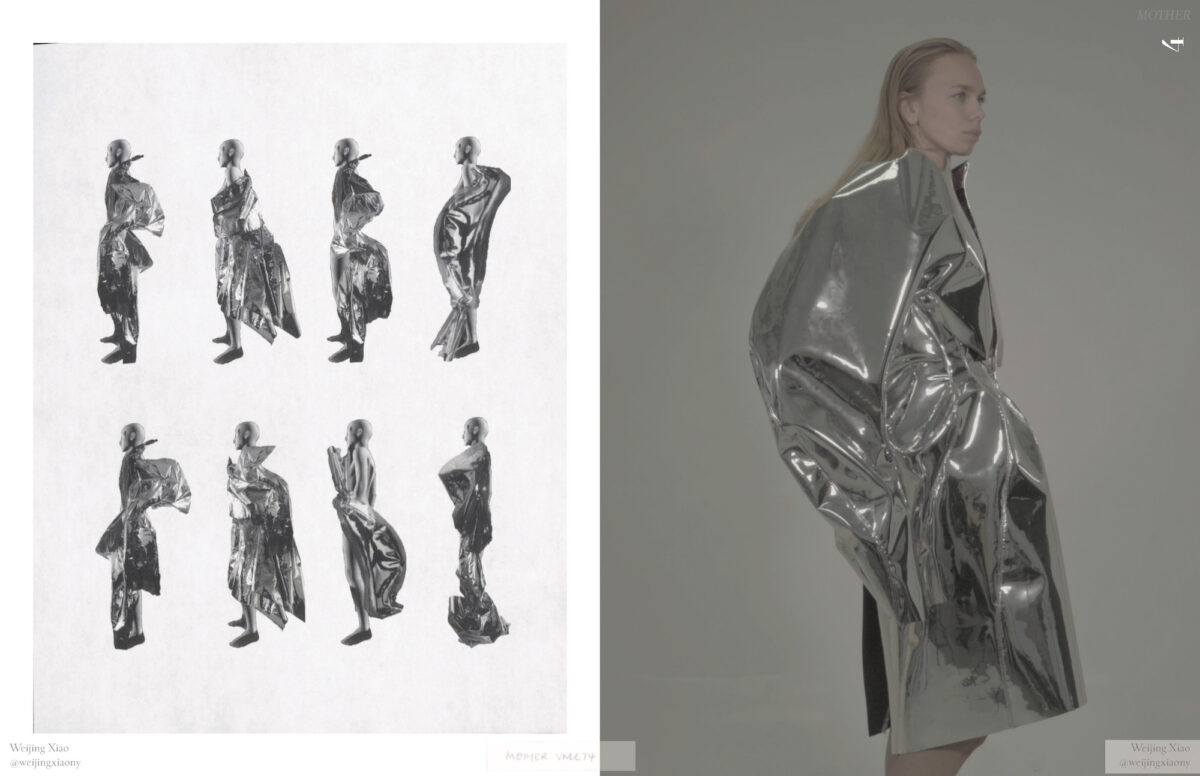
SA: I definitely had a crisis where I got to the point where I didn’t really like fashion. Because, just because, I did feel like it was decorative. And I was sort of like, what’s the point? And to me, the more time I spent in fashion, I realized that there’s so many different aspects of it.
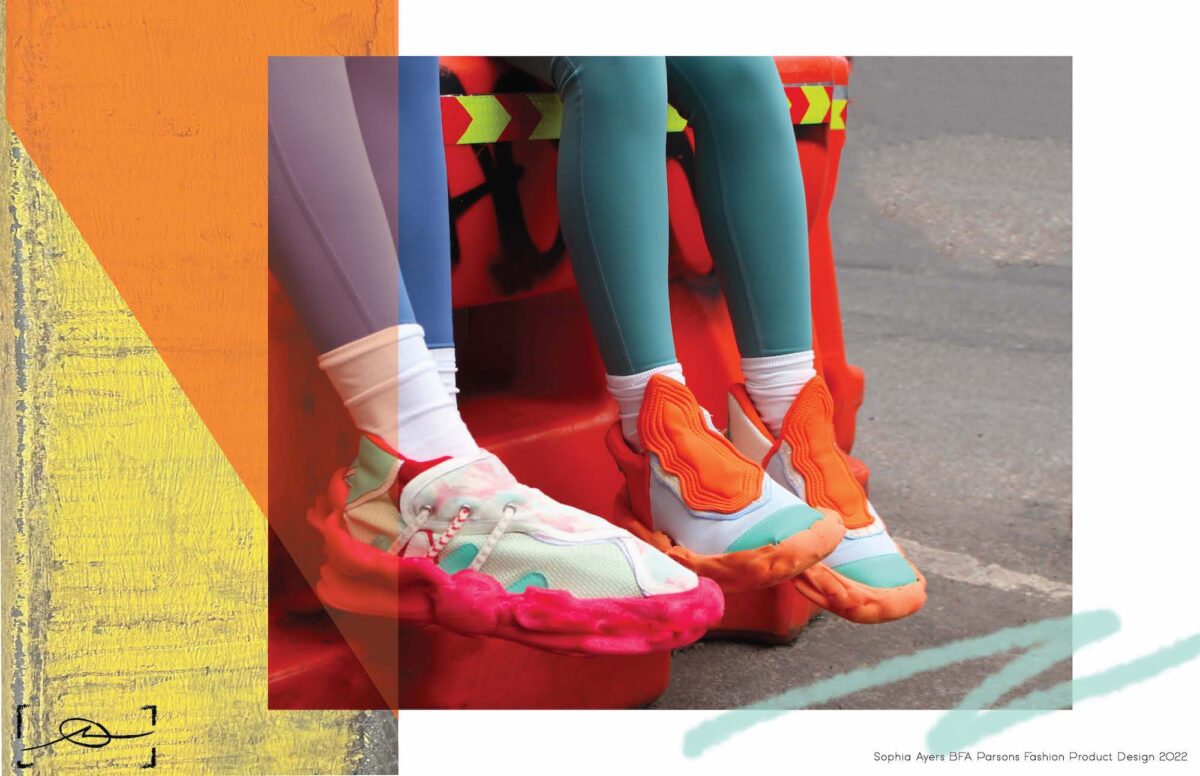
YZ: I feel like what is important is to find what you love.
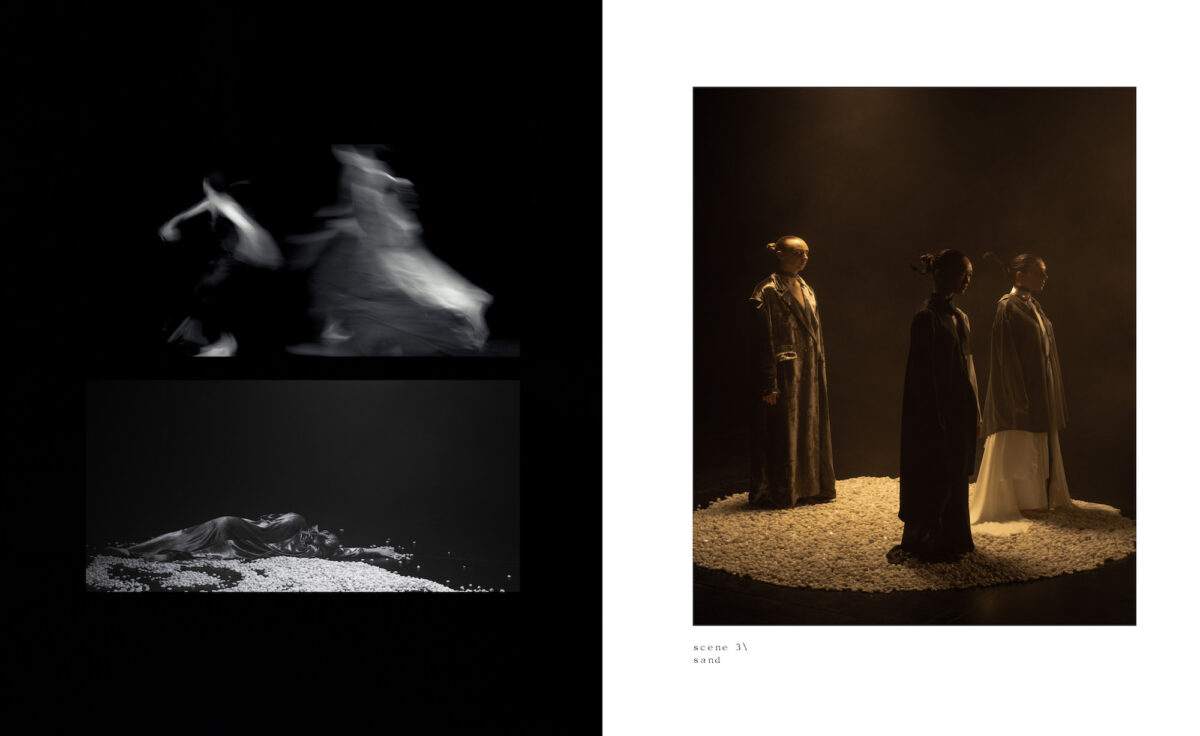
KR: One of my favorite things is asking people ‘What’s their favorite garments or collections?’ Someone involved in fashion will never say, ‘Oh, I pick this because it’s pretty’. They’re going to give you a deep dive into their mind and thought process of why they can either relate to a certain garment or a certain collection. A picture can say 1000 words but a garment can say a million.
View the entire Parsons BFA Fashion Design Collection here.

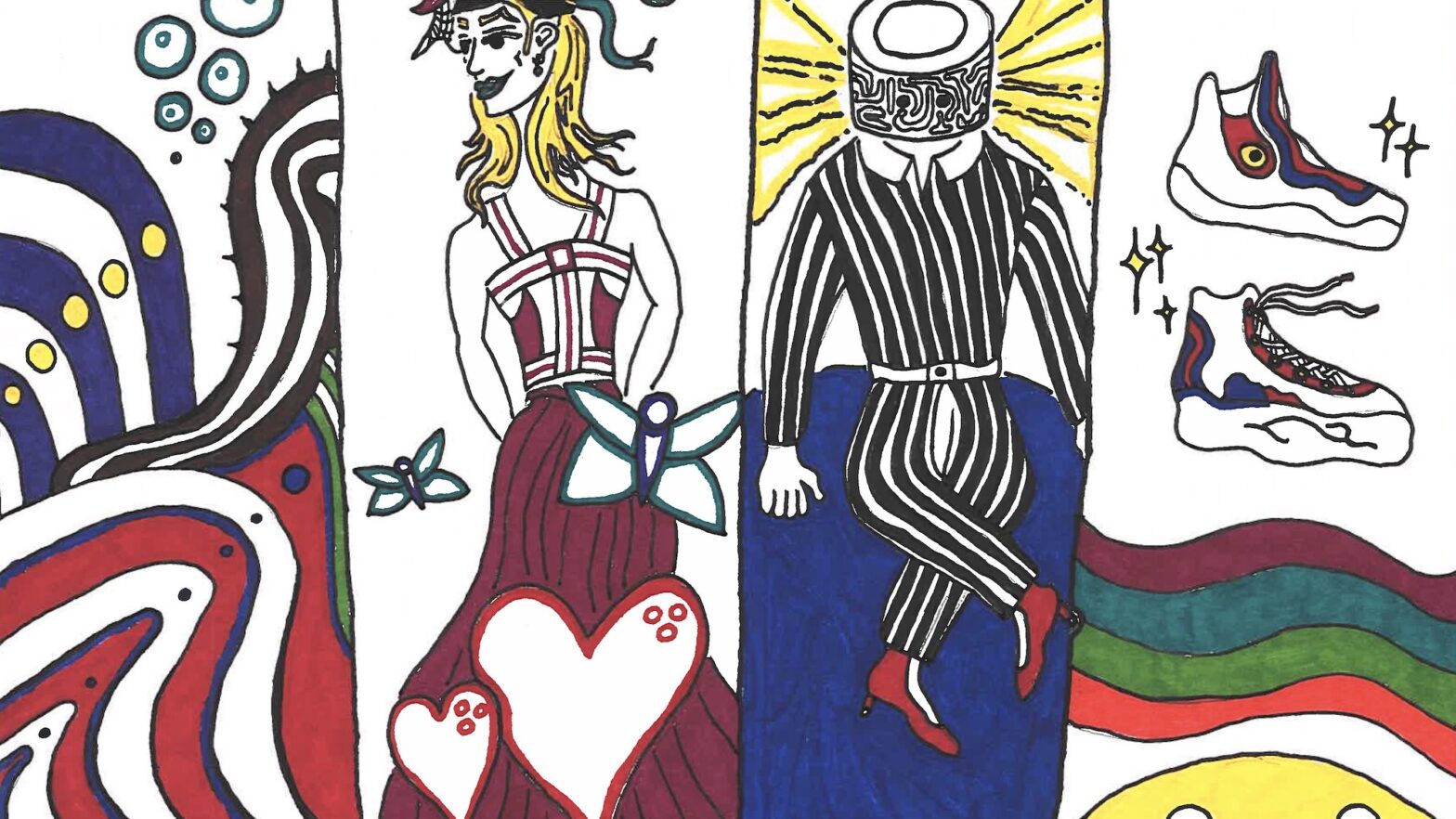
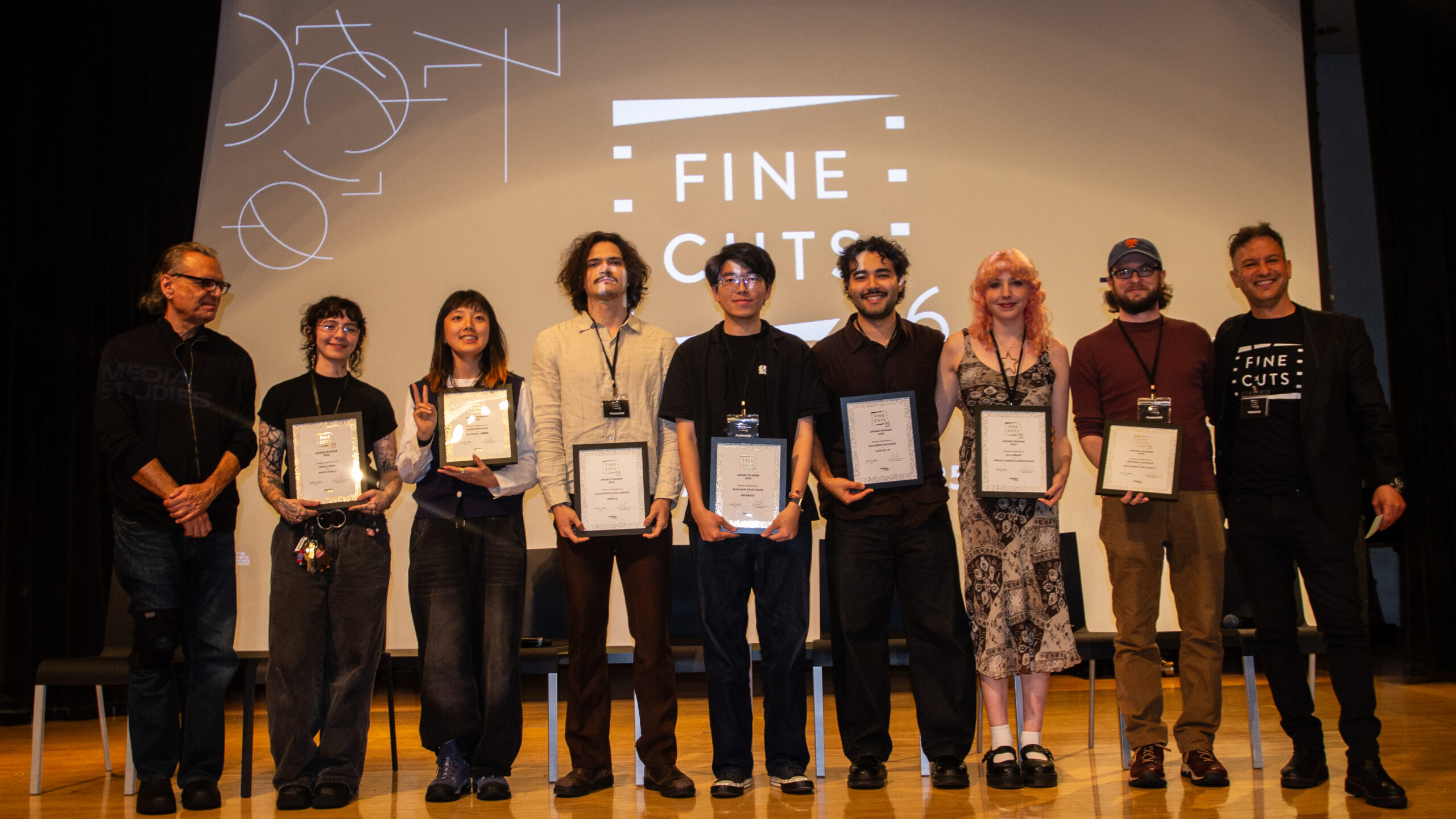
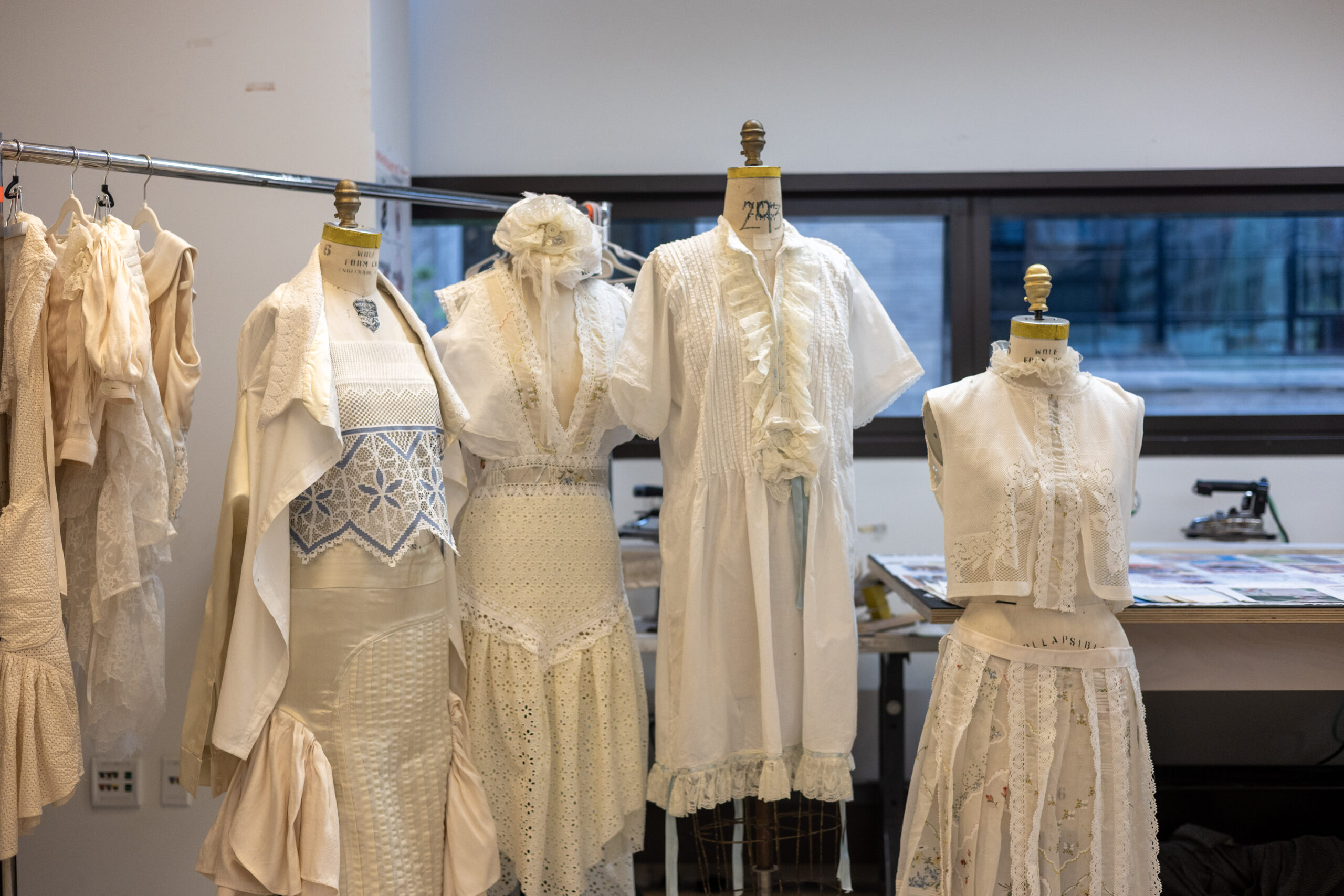

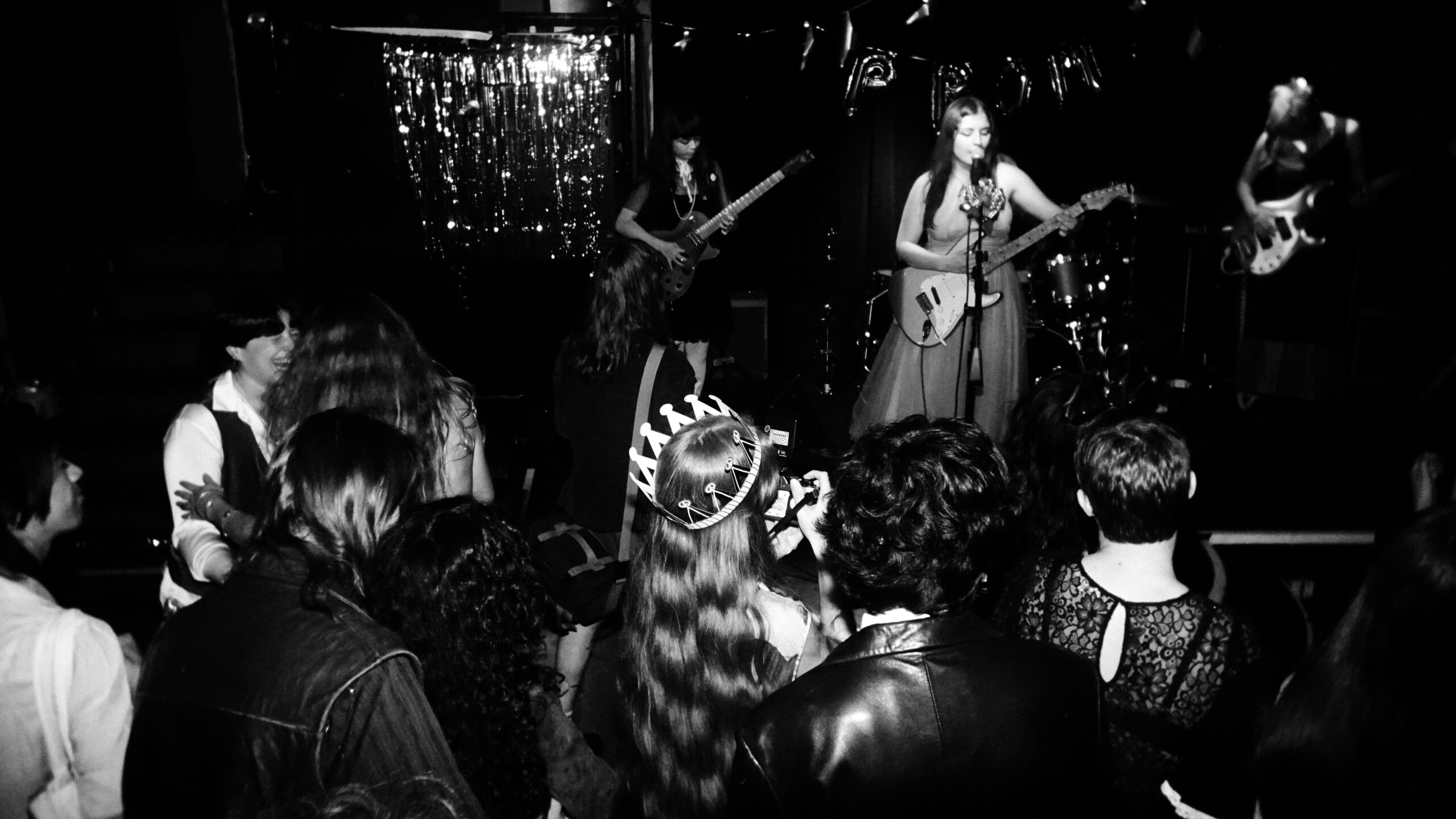
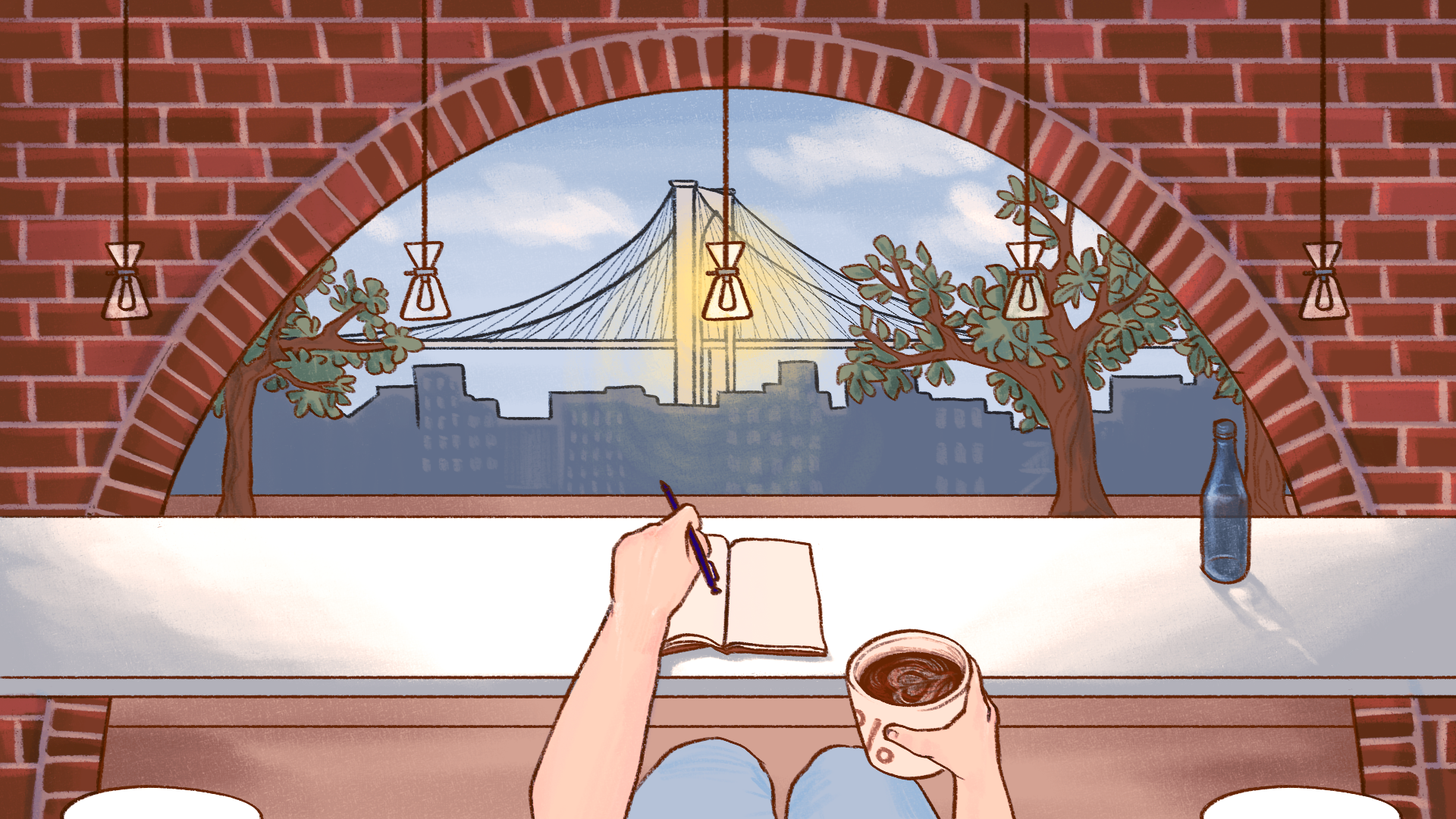

Leave a Reply